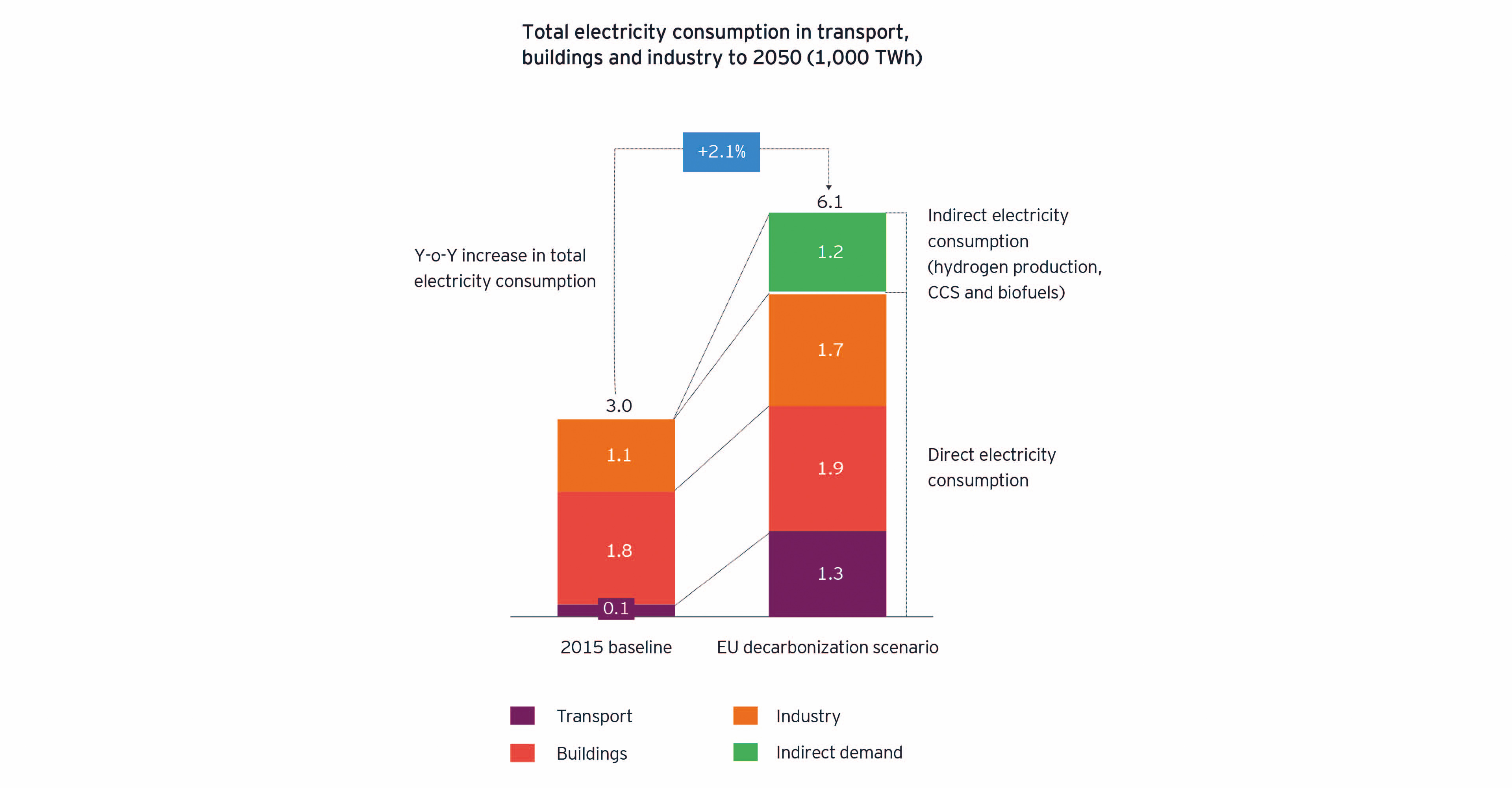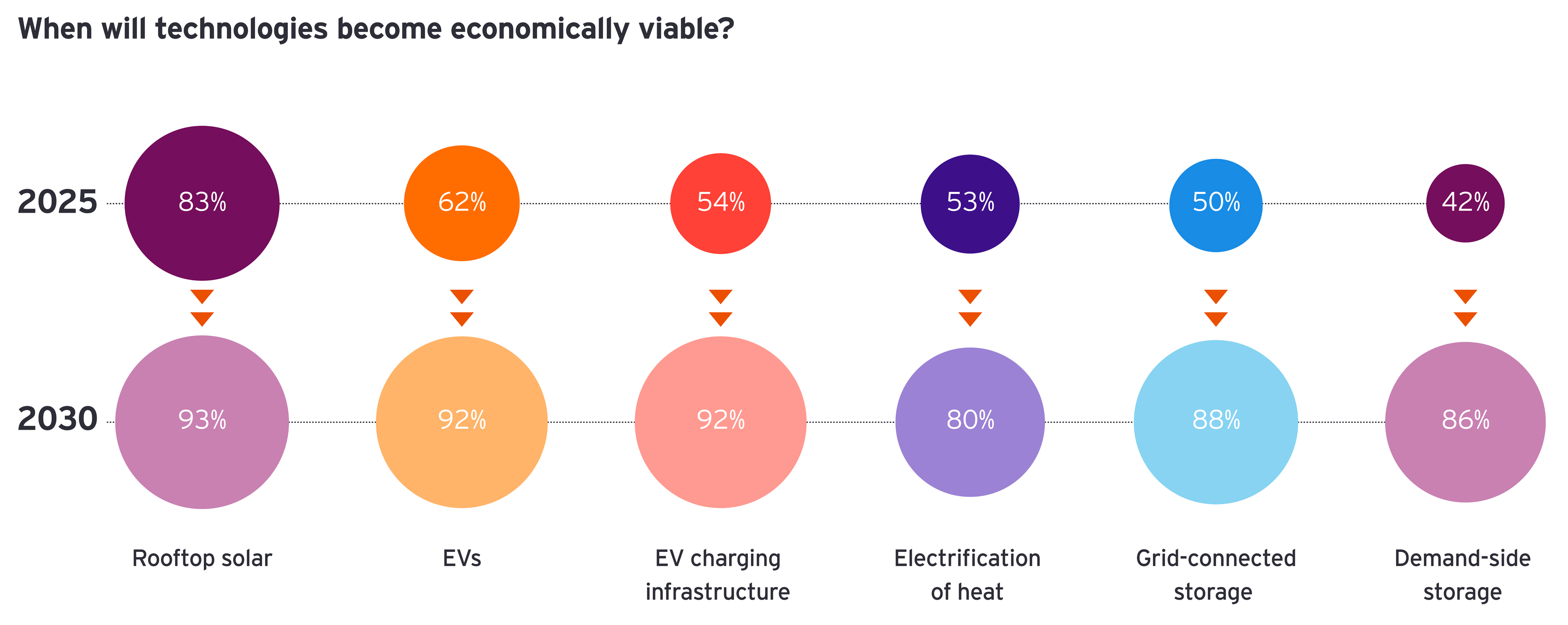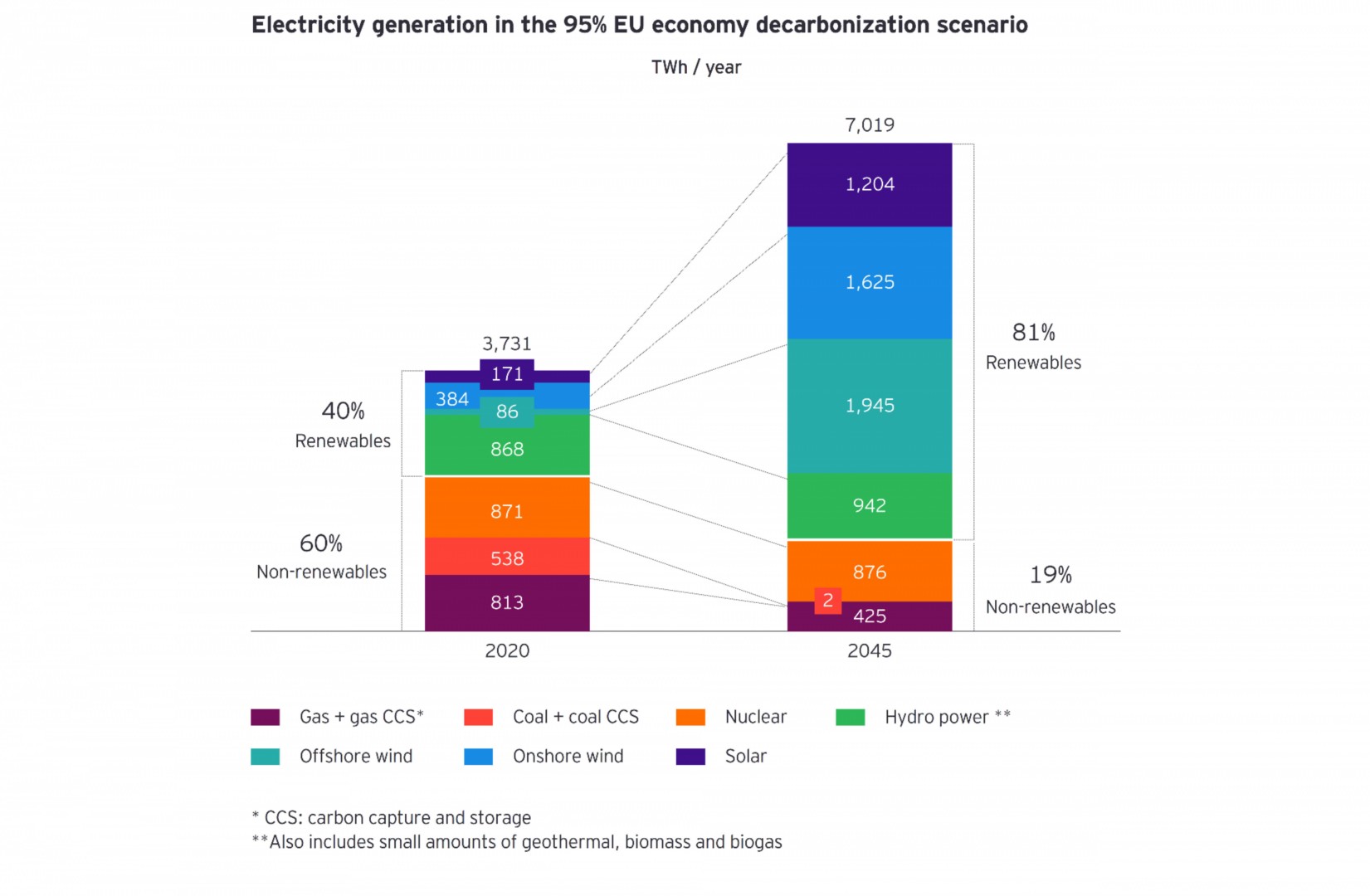As energy becomes cleaner and cheaper, electrification of transport and other energy-heavy sectors will accelerate. The flip side for DSOs is considerable new load on the system.
The current remedy is to reinforce the network, which comes at significant cost. In fact, the European Commission estimates that an additional €11 billion is needed per year to 2030 to reinforce Europe’s grid. As decarbonization of transport, buildings and industry is expected to boost year-on-year demand to 2.1% – double current levels in absolute terms – reinforcement cannot be sustained indefinitely.

Source: “Decarbonisation Pathways (pdf),” Eurelectric, accessed 8 December 2018.
Vehicles, heat and buildings
Today, the transport sector consumes around 2% of total electricity use, of which rail accounts for two-thirds.
Currently, there are around 1.4 million EVs on Europe’s roads, which represents just 2% of all new cars sold in the EU in 2018. But, with light-duty EVs expected to reach cost parity with petrol and diesel vehicles in Europe before the mid-2020s, this picture is set to change dramatically.
Backed by the rising economic viability of battery technology and greater availability of EV charging points, EV adoption is expected to rise to 33% of new vehicle sales by 2030. By then, Europe’s total EV fleet will be approximately 30 million, calculates Eurelectric.
Backed by the rising economic viability of battery technology and greater availability of EV charging points, EV adoption is expected to rise to 33% of new vehicle sales by 2030.
The outlook for EV take-up is boosted by a combination of political mandates and public policy, such as Europe’s Clean Vehicles Directive. Bans on the future sale of internal combustion engine vehicles are in place in many EU countries. If other economic areas follow their lead, decarbonization and electrification will accelerate.
Electrification will boost energy demand from other sectors of the economy too. Heat pumps and innovations in water heating, for instance, could convert up to 63% of energy consumption in buildings to electric. This will rise once stricter regulations, such as mandatory retrofitting and new-build requirements, come into effect.
Meanwhile, technology breakthroughs, and the relative competitiveness of electricity compared with other carbon-neutral fuels, could see around half of industrial processes electrified directly. Hydrogen, and other carbon-neutral alternatives, will contribute toward indirect electrification.
Ultimately, the changes brought by the pursuit of a low-carbon economy add up to increased demand on electricity networks and new challenges for tomorrow’s DSOs.
Related article

Source: “EY DSO survey,” 2018.
“You may delay, but time will not.” – Benjamin Franklin1
2045 is someway off, but the deadlines for action are pressing.
So far, at a local level, DSOs have been able to deal with rising volumes of DER due to the strength of the grid and the manageable levels of new connections. Now, DSOs face a rapidly changing and increasingly complex operational landscape.
Five years from now, the energy system will look and behave differently. Technology-enabled innovation and consumer appetite will see increasing volumes of DER and EVs come on line, threatening the operation and capacity of the grid. Systems, networks and their operators are having to adapt. Inevitably, building and upgrading the grid will be expensive and have long lead times. Investments in smart technologies and innovation should be prioritized and scaled to meet the ongoing needs of the system. In a high-renewables future, this requires a step change in the need for integration and flexibility to ensure security of supply.
The decarbonization agenda is an extension of the energy transformation changes already underway. Electrification of transport, buildings and industry is no quick fix. Though utilities may delay, time, most certainly, will not.
Summary
There’s nothing like an ambitious target to galvanize action. But decarbonization of electricity by 2045 must start with transformation in the roles and responsibilities of the distribution system operators that will enable it. They will connect new load, reinforce the network, maintain visibility over distributed energy flows, establish commercial frameworks for trading energy between participants and roll out customer solutions. Without them and adaptive regulation, the energy transition will be too costly and unsustainable. And the decarbonization target will not be met.



